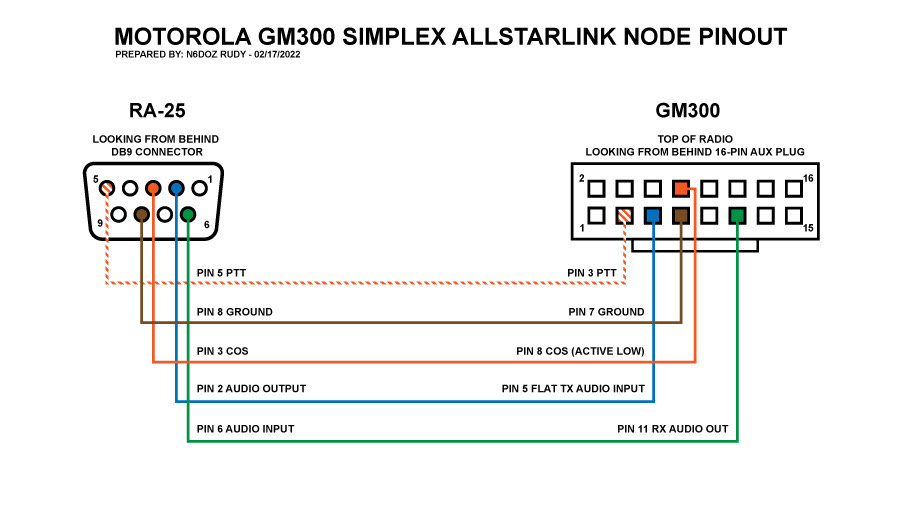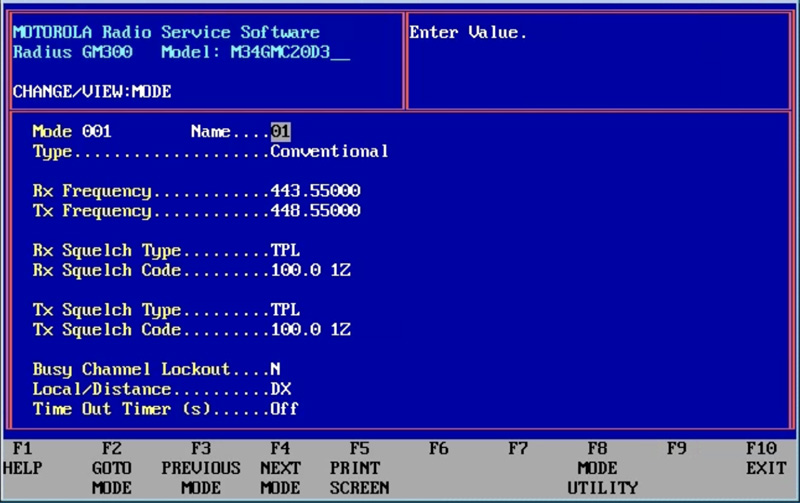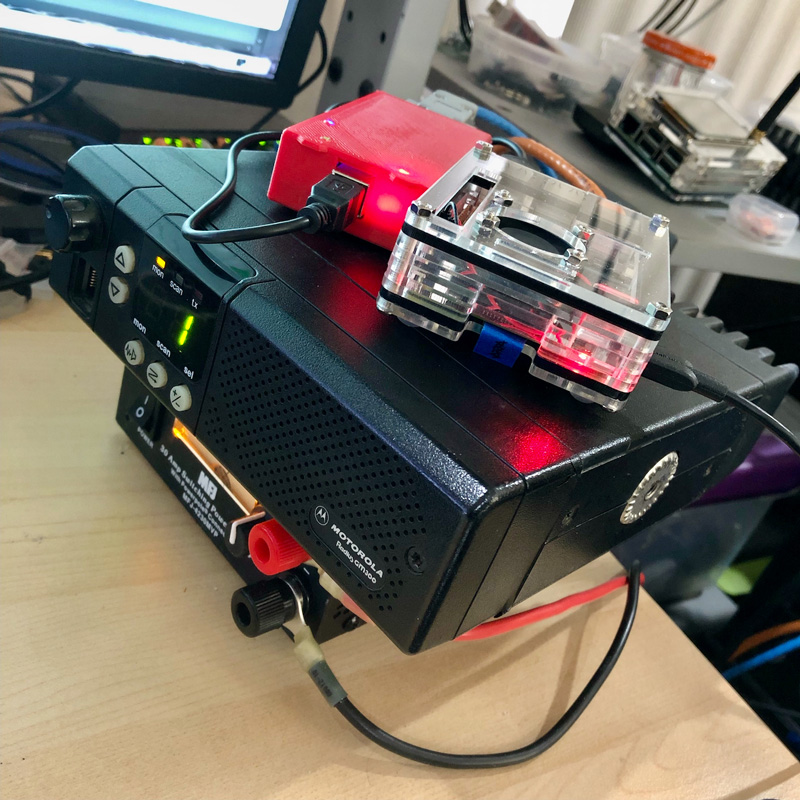Simplex Motorola GM300 Allstarlink Node
One of our fellow hams who belong to a group up in Canada asked for help on making a cable for their simplex node to interface with their local repeater via RF - I made a cable, but never tested it out for myself and just went by documentation. Unfortunately, it did not work so I went ahead and recreated it last night and found the problem I have created for myself. Here's the documentation so that you do not fall into the same pitfall I did - T&E (trial and error) at its finest. :pThe plan
Wednesday, February 16, 2022Recreate a simplex Motorola GM300 Allstarlink node.
Here are the parts to source and the software.
- Motorola GM300 from eBay, other market places or Ham friends :D
- Masters Communications RA-25 usb radio adapter interface $85 shipped ($30 unassembled, $60 assembled & tested, $15 for a 3d printed case).
- Raspberry Pi 3B or 3B+ (Out of stock everywhere! Perhaps one laying around?)
- Raspberry Pi 3B Case + Power Supply
- 16GB MicroSD Card & Reader
- 12v 20A Power Supply
- DB9 Male Connector with hoods.
- Motorola HLN9457A 16-PIN Accessory Connector Kit
- Interface cables (I use solid CAT6/E or CAT5/E)
- HamVoip Distribution Allstarlink Image v.1.6-14
- GM300 Serial Programming Cable
- DOS capable computer and the GM300 RSS
Make that interface cable!
The hardest part about this project is making the cable! Having to solder and crimp those small pins for the 16-pin accessory connector is a pity.- Plan out the wiring scheme and wiring colors below is a diagram how I put the cable together.
- Strip about an inch and a half of the cable sleeve and also strip 3-4mm of the insulator off the wires.
- Solder the wires on the proper leads for the DB9 connector.
- Secure the connector with its cover.
- I used zip ties to secure the cable to make sure it doesn't slide in and out of the cover.
- Use a little solder on the pin connector and adhere the wires to them.
- Crimp them gently to prevent damaging the pins.
- Insert the pins into the proper slots in the 16-pin accessory connector.
- Secure the cable and its slack with a zip tie to prevent it from getting pulled apart.

Program the radio
This part is somewhat difficult as well. You have to be able to find a computer with a serial DB9 port which will run the GM300 RSS on DOS, as well as you need to have the programming cable. I'm not going into detail with programming the radio, but I will however, point out areas to pay attention to.- Adjust the TX and RX frequencies for the node as well as PL/DCS.
- Make sure that COS output is active low - this is done by programming the GM300 as a repeater and switching back and programming it in radio mode.
- Make sure that jumper JU551 is in position A (look at where the JU551 jumper is here and here), so that the RX audio on pin 11 is not muted, not de-emphasized.

HamVoip Allstarlink
I typically use BalenaEtcher on Windows or Mac to write the image onto the card but there is also Win32 Disk Image for Windows.- Download the HamVoip Allstarlink distribution image.
- Image the MicroSD Card, once done insert it into the RaspberryPi.
- Connect the interface cable to the back of the Motorola GM300 and RA-25.
- Connect the RA-25 to the Raspberry Pi with the supplied USB cable.
- Power everything up and SSH (or what some would call Putty) in to your node and configure it with your Allstarlink node credentials, etc.
- Settings for simpleusb-tune-menu:
- Rx Voice Level = 200*
- Set Transmit A Level = 800*
- Set Transmit B Level = 800*
- Set Transmit DSP Level = 999
- rxboost=0
- carrierfrom=usbinvert
- ctssfrom=no
- invertptt=0
- plfilter=yes
- ctssfrom=no
- invertptt=0
- deemphasis=no
- preemphasis=no
- rxaudiodelay=5
- Turn Echo Mode on "C" to listen to your audio, then turn it off when done.
- Adjust the RA-25 RX pot as needed since the flat audio coming from the GM300 needs a lot of push.
- Trim RXAUDIODELAY value to remove the tail squelch noise.
- Remember to Write "W" the configuration and exit.
- rpt.conf modifications:
- telemnomdb=-6 ; turn the voice announcement down when no traffic
- hangtime=0 ; squelch tail hang time (in ms) - PREVENTS PING PONG
- althangtime=0 ; alternate hang timer with control operator function (in ms) - PREVENTS PING PONG
- telemdefault=0 ; 0= voice telemetry off - TURN OFF CONNECTION ANNOUNCEMENTS
* Dependent on local RA-35 pot setting.
Connect and Modulate
Once you get all your settings dialed in connect to your favorite hub/node/network! Sure easily written than done, but with your hard work, you'll be rewarded with QSOs from all over the world. Good luck! 7-3
Thanks to VE7OCA Albert Salazar for working with me remotely to get this going and NV7RP Ranilo for the radio and shipping it, plus VE7SGY Jon for coordinating! Of course, thanks to the VA7RPA Radio Pinoy of British Columbia group for allowing us to do this.
More projects…